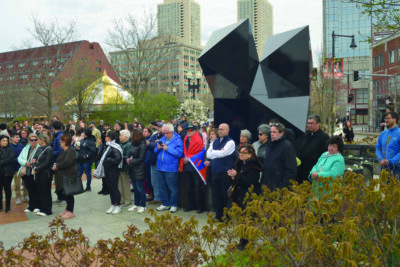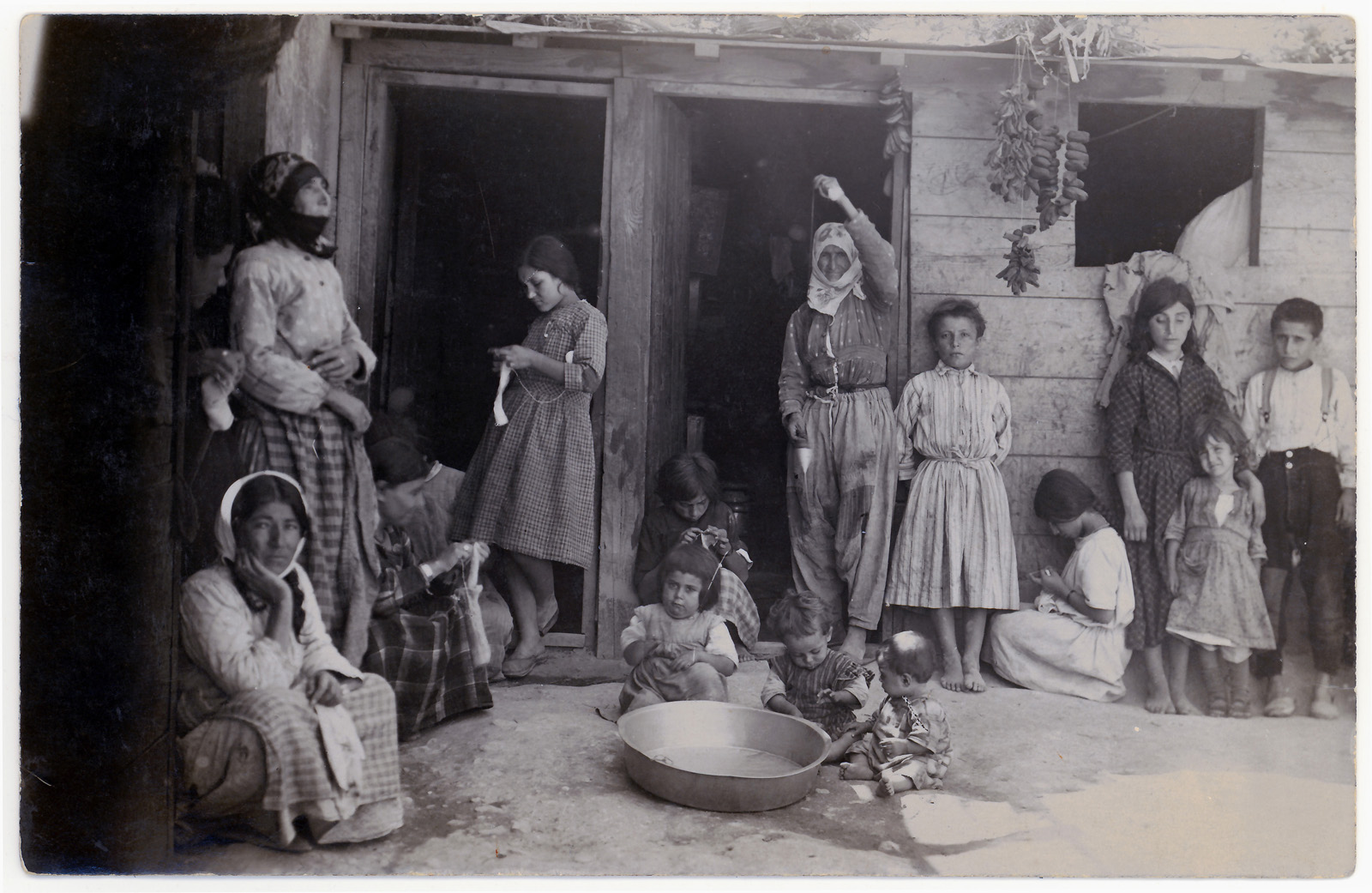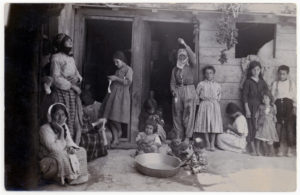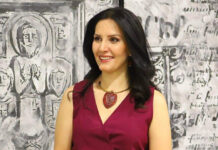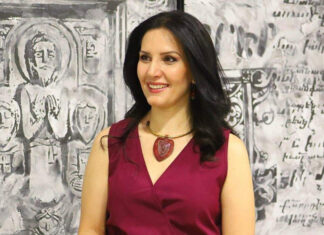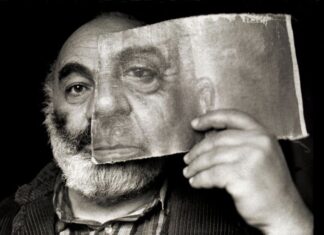by Tom Vartabedian
NEWTON, Mass. — What’s in a photo? Well, if it was taken in 1946 inside a Watertown building called Kondazian Coat Factory, plenty.
The picture shows Armenian immigrant employees and perhaps children of those refugees sitting around tables filled with libations and what appears like mezza plates.
The people are wearing smiles for the most part and the look of Armenia reflected in their eyes. The photograph was supplied by Janet Khozozian Shemligian from Mashpee and served as a centerpiece for a Project SAVE gala May 8 at Karoun Restaurant in Newton.
Supporters gathered at this eatery to exchange conviviality, much like that image taken nearly seven decades prior.
Pictures don’t lose their value. They simply punctuate and define our existence as Project SAVE Executive Director Ruth Thomasian explains. They are our link between the past and the future.
The evening was more than a glass of Chablis and hors d’oeuvres, but a prelude to Project SAVE’s 40th anniversary next year and a chance to celebrate 39 years of success — all of it under Thomasian’s eagle-eyed watch.
In attendance was a cadre of volunteers, including 87-year-old Sophie Tolajian, a poster child for her generation. As she said, “the pleasure is all mine.”
On hand were a number of familiar people from the community. Greeting them at the door was Karoun owner John Eurdolian, who opened his landmark restaurant 38 years ago.
Not only did he throw open the doors of his premises for Project SAVE, but he donated the mezza plates.
“I don’t know how that woman does it,” he said, pointing to Thomasian. “All these years, keeping a tradition like this going with limited resources and meager quarters. It’s been the ultimate mission — a labor of love!”
Eurdolian also offered a few words of public wisdom when it came to the formalities. Both he and Ruth hung up their shingles around the same time and have shared a friendship ever since. And each of them pursued their own cause — an insatiable appetite to feed the soul through food and photography.
“Alone, no one can save the Armenian heritage,” Thomasian pointed out. “Together we can make a difference.”
Thomasian has taken her show on the road, appearing in Troy, NY, and Hartford, Conn., for Genocide commemorations and a lecture series. An exhibit is planned next April in Mission Hills, Calif., called “Light before Darkness: Armenians in the Ottoman Empire.”
In recent weeks, she joined the Armenian Genocide Education Committee of Merrimack Valley at Wilmington High School and Northern Essex Community College in Haverhill, educating those students through her visual displays. Prior to that, she was in Newton at the Photographic Historical Society of New England with a program titled, “Historical Memory through Photographs.”
Office assistant Suzanne Adams has been on site for several years as a self-proclaimed “adopted Armenian.” Like Thomasian, she is a Simmons College graduate and complements the organization quite nicely.
“Ruth has turned ordinary history into something extraordinary,” Adams noted. “Her appreciation toward ordinary Armenians is just as provocative.”
